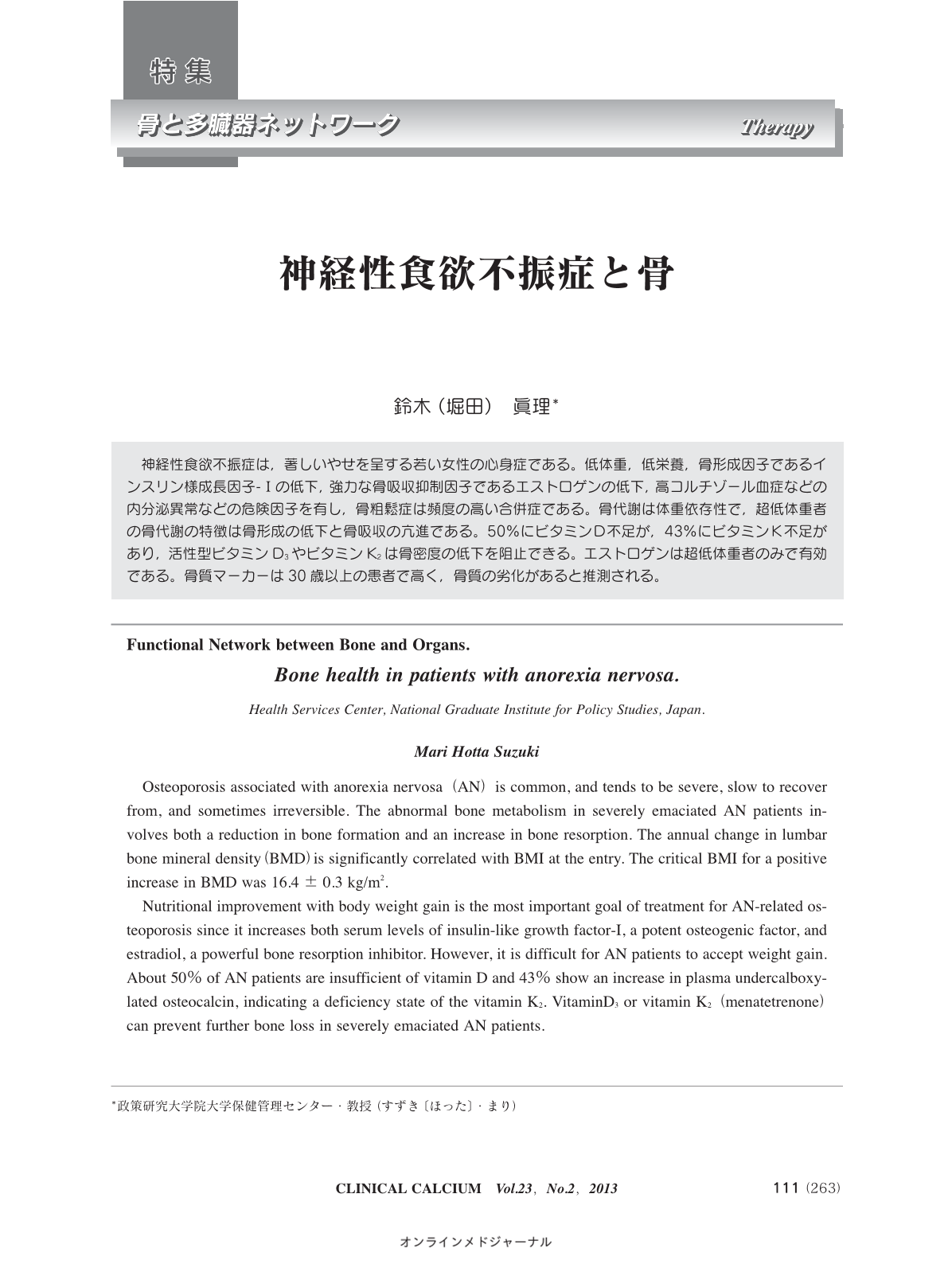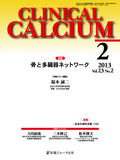Japanese
English
- 有料閲覧
- Abstract 文献概要
- 1ページ目 Look Inside
- 参考文献 Reference
神経性食欲不振症は,著しいやせを呈する若い女性の心身症である。低体重,低栄養,骨形成因子であるインスリン様成長因子- I の低下,強力な骨吸収抑制因子であるエストロゲンの低下,高コルチゾール血症などの内分泌異常などの危険因子を有し,骨粗鬆症は頻度の高い合併症である。骨代謝は体重依存性で,超低体重者の骨代謝の特徴は骨形成の低下と骨吸収の亢進である。50%にビタミンD不足が,43%にビタミンK不足があり,活性型ビタミンD3やビタミンK2は骨密度の低下を阻止できる。エストロゲンは超低体重者のみで有効である。骨質マーカーは30歳以上の患者で高く,骨質の劣化があると推測される。
Osteoporosis associated with anorexia nervosa(AN)is common, and tends to be severe, slow to recover from, and sometimes irreversible. The abnormal bone metabolism in severely emaciated AN patients involves both a reduction in bone formation and an increase in bone resorption. The annual change in lumbar bone mineral density(BMD)is significantly correlated with BMI at the entry. The critical BMI for a positive increase in BMD was 16.4±0.3 kg/m2. Nutritional improvement with body weight gain is the most important goal of treatment for AN-related osteoporosis since it increases both serum levels of insulin-like growth factor-I, a potent osteogenic factor, and estradiol, a powerful bone resorption inhibitor. However, it is difficult for AN patients to accept weight gain. About 50% of AN patients are insufficient of vitamin D and 43% show an increase in plasma undercalboxylated osteocalcin, indicating a deficiency state of the vitamin K2. VitaminD3 or vitamin K2(menatetrenone)can prevent further bone loss in severely emaciated AN patients. Recently, bone strength has been evaluated by both BMD and bone quality. Plasma levels of homocysteine, a marker of degradation of bone quality, have significantly positive correlation with their ages of AN patients. We must evaluate bone density as well as bone quality in AN patients.



